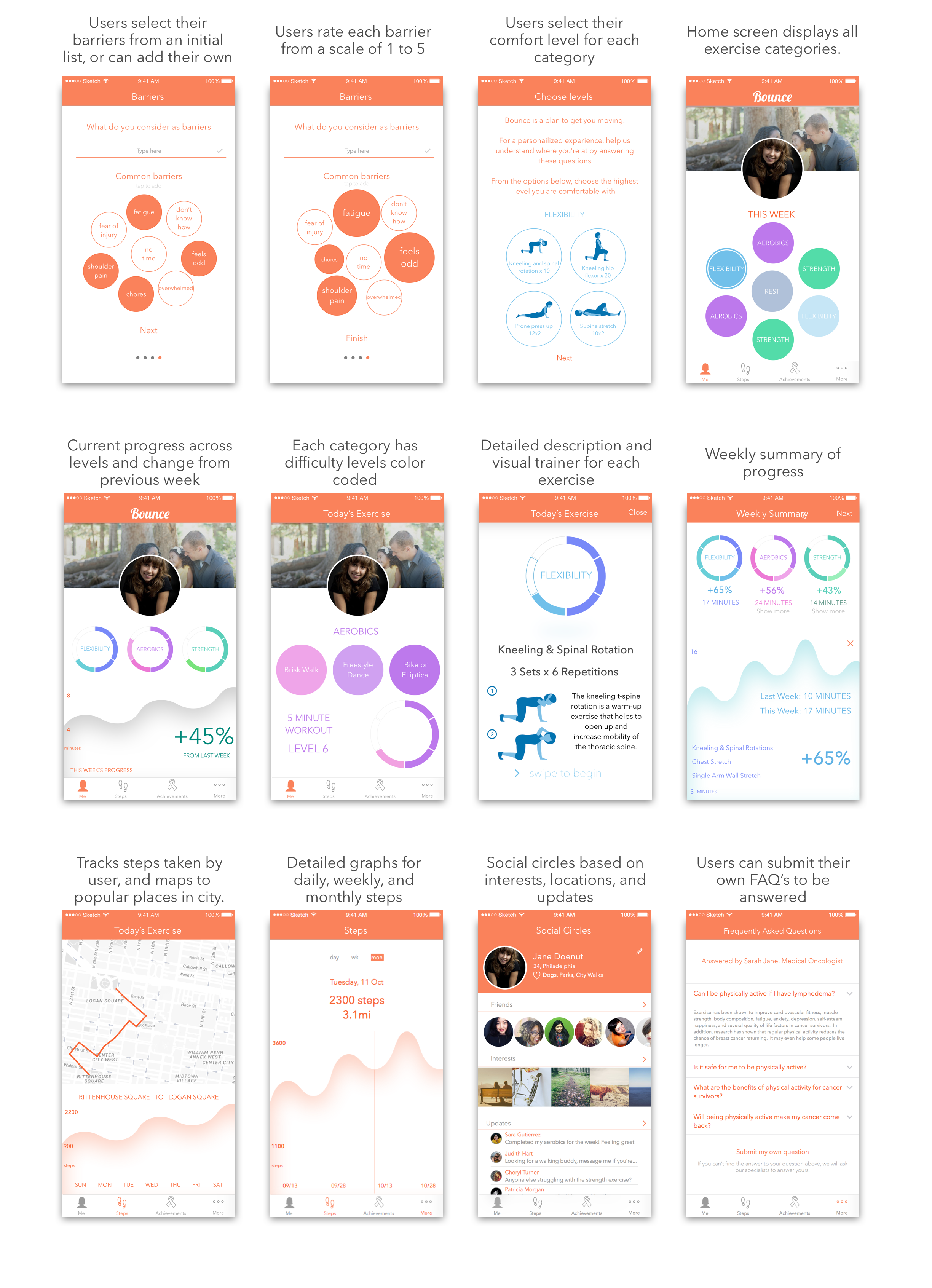Bounce
A behavioral intervention for sedentary breast cancer survivors, built in partnership with clinicians at the Thomas Jefferson Cancer Center.
CHI 2016 Student Research Winner • CHI Publication • Pervasive Health Publication
Problem Space
Breast cancer survivors are often sedentary and avoid physical activity due to fear of post-op injuries. While survivors have distinct barriers to physical activity, they also have significantly more pronounced health benefits from exercise than the general population. While there are several fitness and health apps, none exist specifically for breast cancer survivors. Bounce is the first of its kind, fitness plan to get survivors moving.
Focusing on three main exercise categories: Aerobics, Strength, and Flexibility, Bounce has been designed in collaboration with clinicians to provide a balanced exercise plan while ensuring the safety of survivors.
Approach
The team comprised of two medical oncologists specializing in breast cancer, and an undergraduate team of students with diverse knowledge and complementary skills. We combine our backgrounds in psychology, entrepreneurship, and information systems to research and design the innovative user experiences of Bounce.
Using the Patient-Clinician-Designer framework, the team was able to gain invaluable feedback on aspects pertaining to medical oncology, behavior change theory, human-centered design principles.
A medical oncologist on the team conducted semi-structured interviews with breast cancer survivors (BCS) and qualitative data was analyzed using thematic analysis. After reviewing several behavior change theories, and based on the analysis of the data, we developed a combined methodological framework to design the key features of bounce. The framework uses constructs from two major behavior change theories:
Transtheoretical Model
Social Cognitive Theory
Early sketches
Early sketches
Late-stage sketches
Early sketches were based on having the survivors exercise 6 days a week, spread out evenly across 3 exercises categories. As the name Bounce had not yet been decided upon, the theme was not integrated into the visual design at this stage.
The medical oncologists and cancer-specialist physical therapists determined that it was safe for survivors to exercise 6 days a week, and be allowed one rest day. They further identified 3 distinct exercise categories - Flexibility, Strength, and Aerobics, which have exhibited pronounced health benefits for breast-caner survivors.
Later stage sketches integrate the Bounce theme into the visual design through circular elements and bright colors
The progress indicator is divided into 6 parts. A hard exercise fills up 3 parts (or half or the circle), a medium-difficulty exercise fills up 2 sections, and an easy exercise fills up 1 section. Each exercise category (Flexibility, Strength, and Aerobics) has it's own progress indicator. The user can only level up when the progress indicator for all three categories is complete.
The Solution



